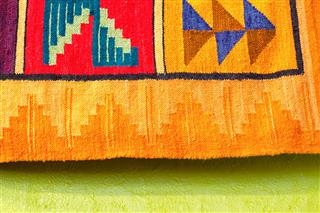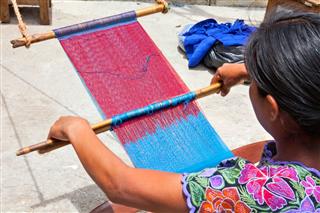
The history of Mexican clothing isn’t very difficult to understand. Traditional Mexican clothing was vibrant, colorful, and very practical for everyday use as well. Continue reading for more information on the Mexican attire, as it was, and as it is!
Mexico has always been known for its rich culture, and of course for its food. A country in the southern most portion of the North American continent, it has lived through many cultural changes and has witnessed some of the most famous eras, some of which are famous even today. Due to these cultural changes, this country has seen many variations in its food, clothing, and way of life in general.
Traditional Mexican clothing was one of the most renowned clothing styles back then. It included vibrant colors, wonderful skirts, and of course the hats. The clothing discussed below, was worn throughout Mexico in the past. Today, the country follows the contemporary styles that are prevalent around the world. The only traces of traditional clothing are visible in the small towns and villages.
History of Mexican Clothing
We all know that Mexico was conquered by Spain in 1521, and gained independence centuries later. However, before this colonization, there were some major cultures living here, the appropriate term for whom would be civilizations. Some of these were the Toltec, the Olmec, the Zapotec, the Teotihuacan, and the Maya sects, and then eventually, the Aztecs. After the Aztecs came the Europeans. All these groups, cultures and civilizations had influenced the clothing styles in Mexico. To have a brief look at the history of Mexican clothing, read on…
The Clothes
The Men: The history of Mexican clothing for men isn’t that difficult to trace, as we still see it in movies, and also in some villages and rural areas of Mexico. In the olden days, men in Mexico wore pants, shirts and boots, as everyday clothing. Shirts were usually only a single color which wasn’t amongst the bright ones. Along with this routine wear, men wore a straw hat called the ‘sombrero’.
The sombrero has since then been a symbol of Mexican clothing. If the temperatures grew colder, the men wore a cape on this attire. This cape was called the ‘sarape’, and reached the knees a minimum. The only colorful part of menswear in Mexico was this sarape. For functions and occasions, men wore the ‘charro suit’, which, since then, has been a legendary form of attire.
The Women: The women in Mexico had some of the most awesome and lively dress styles back then. Skirts were worn more commonly than any other form of clothing. These skirts were either ankle length or knee-length. Again, the ankle length skirts were more common. The skirts always had a flare to them. On these skirts, women wore the traditional vintage blouses, but light in weight and material too. The blouses usually had quarter or half length sleeves. When the temperatures got hotter, the women wore a tunic called ‘huipil’.
This huipil was sleeveless and usually had patchwork done on it. This tunic was not body hugging, thus allowing passage of air. Accompanying this attire was a ‘rebozo’. Similar to a shawl or a stole, this usually was made of woolen texture and vertical stripped patterns. For grand occasions, the women wore a puebla dress, which was similar to a sundress with cross stitched patterns. Even today, you might notice women attending traditional functions in these dresses, along with a quechquemitl. A quechquemitl is a small poncho.
The Colors
The history of Mexican clothing won’t be complete if I don’t mention of the colors they preferred. Mexicans loved loud colors and earthy shades as well. Shades of brown, red, orange, green and yellow, were the most common. Initially, pigments were obtained from plants grown nearby. Once the Europeans settled there, these pigments were replaced with artificial acrylic dyes.
The festive occasions demanded more color in the clothing. More vibrant the color, the better dressed you are. These colors were responsible for adding life to the clothing. These colors were observed even in the jewelry Mexican women wore back then.
The Fibers
The first record in the various types of Mexican clothing, in terms of texture, is the use of a backstrap loom. Before the European influence, Mexicans used agave, cotton and bark, to produce their clothing. After the European influence on clothing crept in, which included the use of sheep wool, the clothing style changed a little to accommodate wool as well. Silk was also introduced in the Mexican attires around that time. After the introduction of these two, the rebozo and the quechquemitl were made using mostly only wool.
The history of Mexican clothing really is very distinctive, isn’t it? As we have seen, the traditional Mexican clothes were simple, yet very beautiful. Again, it did not only qualify as one of the most beautiful forms of clothing, but also one of the most useful. The rebozo for example, was widely used to carry infants. This form of clothing was prevalent in Mexico for the longest time. A few years after independence, the urban people started following global fashion trends, and continue to do so today.

































